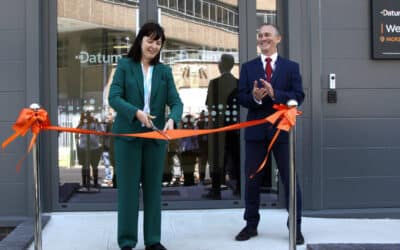A new report from AeroCloud, the Stockport-based intelligent airport management platform that improves collaboration and operational efficiencies, reveals that despite passenger demand rising to near pre-pandemic levels, 58% of airport leaders are still worried about their financial stability.
36% of respondents also reported that they are still in debt.
Findings from the Getting on the Runway to Growth report, a global study of 200 airport leaders, has revealed that 54% of UK airports still haven’t seen their revenues recover since the slowdown caused by the pandemic.
Growth is understandably front of mind, with the report finding their joint top-rated commercial priorities as increasing growth margins (94%) and optimising and increasing capacity for take-off and landing slots (84%).
UK airports face a number of hurdles in achieving this growth, including:
- Sluggish passenger growth and spending: 72% of UK airports worry that passenger numbers won’t recover to pre-Covid levels, rising to 80% having concerns that passengers will choose to fly from other nearby airports. Added to this 74% predict the cost of living crisis will impact consumer spending with concession partners
- Staffing issues: 60% of airports view not being able to hire enough staff to meet rising flight and passenger volumes as a risk to operations over the next 12 months
- Disruption and flight cancellations: 70% fear the impact of disruptive events outside of their control, whether delayed flights, air traffic faults or extreme weather. 82% called out flight cancellations as particularly negatively affecting their reputation with passengers
George Richardson, CEO and co-founder, AeroCloud, said: “While some of the UK’s major airport hubs report seeing passenger numbers bounce back, this clearly isn’t felt across the nation. Many airports are struggling to claw back passenger volumes and much needed revenue. This isn’t helped by the high levels of disruption we’ve seen this year from factors outside their control, such as the Air Traffic Control ‘one in 15 million’ fault over the Bank Holiday Weekend, strong winds earlier this month at Heathrow, and of course the persistent staffing shortage.
“But airports are determined to navigate these challenges and it’s very clear from our research they understand the operational improvements that are necessary to boost passenger experiences and, in turn, growth in the year ahead.”
Airport also leaders identified four key areas where they see opportunities to boost their growth in the report:
- Attract new airlines: With 52% of airports stating they still haven’t been able to restore all routes served before the pandemic, it’s not surprising almost all hope to increase the number of flights travelling through their airports by attracting new airlines (96%) and optimising take-off and landing slots to increase capacity (84%). To achieve this, they plan to improve gate management to create space for new entrants, offer airlines access to airport operational data for improved visibility, and lower the upfront investment with common-use facilities, such as shared check-in desks, and ongoing costs for airlines.
- Boost passenger experiences: Airports recognise the importance of being ranked as a top airport for passenger experience – such as by Skytraxx and Which? – to increase passenger footfall (92%). To improve the passenger experience they want to reduce security wait times, offer a seamless journey through the airport, and provide more self-service tools for check-in and bag drop.
- Increase passenger spending: 76% of airports want to increase spending in concessions and Duty Free. They plan to encourage this by making the airport become a shopping destination for more pre-planned purchases, offering a good range of retail outlets, and speeding up the time it takes for passengers to get through check-in and security so they can spend more time in concessionary areas.
- Transform airport operations: Upgrading legacy technologies and systems is a commercial priority for 90% of airport leaders, enabling them to improve the efficiency of their operations and, in turn, better manage disruptive events. Indeed, 60% of airport leaders identified not investing in new technologies that will optimise airport operations – such as SaaS platforms, automation and AI – as a key risk over the coming 12 months.
Richardson continued: “The reliance on legacy systems and technologies by airports hugely reduces their efficiency in managing existing assets. In fact, 44% of UK airports told us they are still using Excel and Word documents to store and manage operational information, such as for gate management and the RONs (Remain Overnights).
“As well as on an operational level, it greatly undermines their commercial interests, such as having the capacity to introduce new airlines and optimise the passenger flow to increase spending. Ultimately, it’s a huge barrier to revenue. That’s why it’s so important for airports to secure the next stage of their growth by embracing the benefits of artificial intelligence, computer vision and the cloud.”
AeroCloud’s full Getting on the Runway to Growth report is available to download here.














